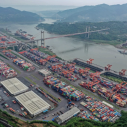Reflections on Race, Gender, and Locality in Global Conflict Reporting
archive

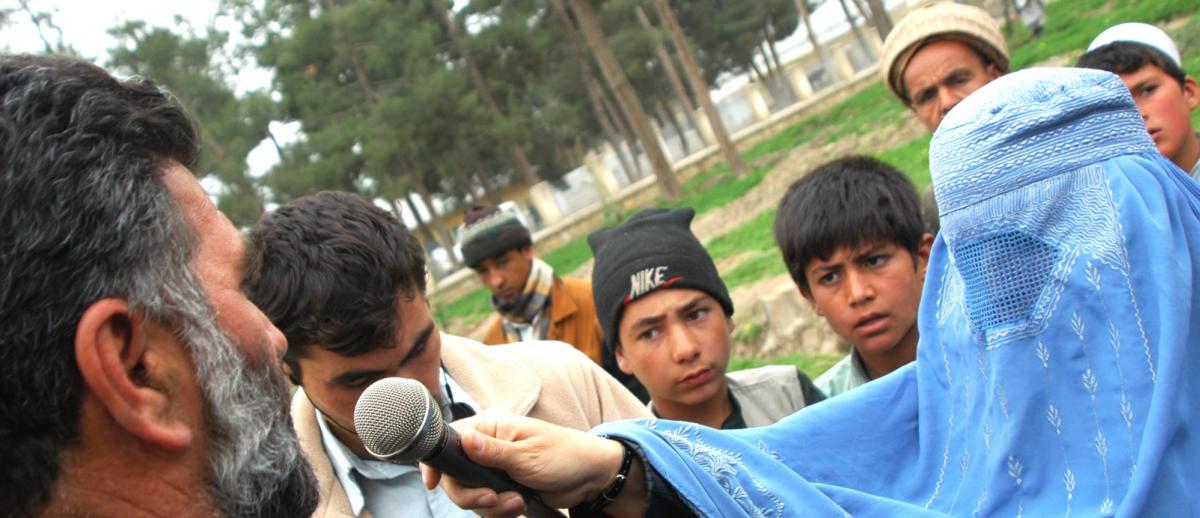
Reflections on Race, Gender, and Locality in Global Conflict Reporting
In 2015, the New York Times celebrated the “rise of the female TV war correspondent,” some of whom were becoming “global celebrities.” Focusing on reporters like CNN’s Christiane Amanpour, CBS’s Lara Logan, and ABC’s Martha Raddatz, the Times article lauded the female war correspondent’s hard work in perilous regions. Yet, despite its upbeat tone, the article also invoked more serious issues: the danger of sexual assault in the field, and the difficulty of striking a balance between covering a warzone and raising a family.
These two themes dominate the popular discourse on gender in war reporting, and they also frequently surface in academic research on conflict correspondence. Foreign reporters Holly Williams and Debora Patta both assert that they have repeatedly been questioned about their families and children—something that rarely happens to male war reporters, as the Times article illustrates. The paradoxical representation of the “war reporter as maternal figure” appears to fascinate the general public, while subtly placing female correspondents on an unequal footing with their male colleagues.
The danger of sexual assault is also a common theme, perhaps with good reason. Before 2011, the Committee to Protect Journalists had not yet gathered any systematic data on the problem of sexual violence in the field.1 It was only after Lara Logan’s highly publicized attack in Cairo that the CPJ began to investigate this pervasive problem.
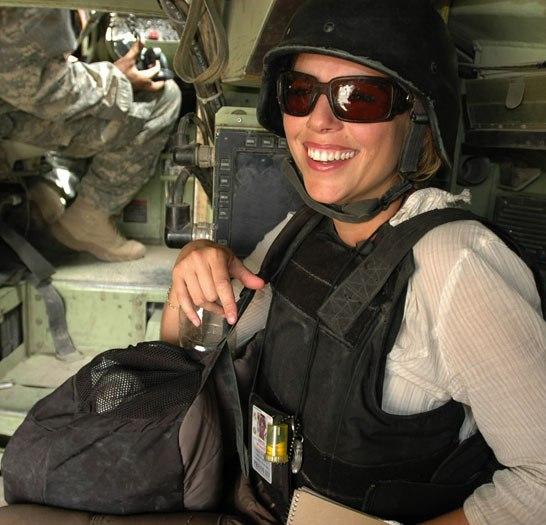
Lara Logan in Iraq.
Credit: Freebase/Public domain
Though the problem of sexual assault needs to be studied (and addressed), this issue should not serve as the default strategy for discussing female war reporters in general. The sad fact is that male journalists also face sexual violence in the field. What is more, the tendency to represent female journalists as “victims” inadvertently restages that very victimization, marking female war reporters as “inferior” to their male colleagues.
What journalism commentators and global communications scholars discuss much more rarely is the larger culture of the war reporting industry, a culture that is only nominally “global.” The women featured in the New York Times article all work for English-language news networks based in the US or the UK.
A few of these women were born in nations outside the Anglophone world (Christiane Amanpour and ABC’s Lama Hasan come to mind). Yet, they work within a particularly “Western” professional culture, contributing to news coverage that typically privileges the political perspective of the US and its allies.2
The culture of English-language war reporting is deeply gendered, but it is also built on inegalitarian notions of race, ethnicity, and nationality.
The power dynamics of this broader framework require more thorough investigation, especially if these reporters are indeed becoming “global celebrities.” The culture of English-language war reporting is deeply gendered, but it is also built on inegalitarian notions of race, ethnicity, and nationality. On one level, the Anglocentrism of this professional culture surfaces in the discourse on “famous” female war reporters. For example, when Logan was sexually assaulted in Cairo, industry commentators all but erased the presence of the Egyptian women who helped to save her, instead representing the men in Tahrir Square as a monolithic group of racialized predators.3 The discourse barely mentioned the many other female journalists working in Cairo during 2011, including those “local” journalists who helped visiting reporters translate interviews and navigate the unfamiliar cultural terrain.
On another level, the Anglocentrism of this professional culture becomes evident when we examine the omissions in the industrial discourse: the fact that “local” female journalists who help big news brands in the field are not always treated equally to their US and British colleagues. Lebanese journalist Hwaida Saad serves a case in point. Saad works with the New York Times bureau in Beirut, and she is enthusiastic about her job. But she says that she receives a lower salary than her American colleagues, including the American women who work at the bureau. This is simply because “they’re Americans,” and she is not.4
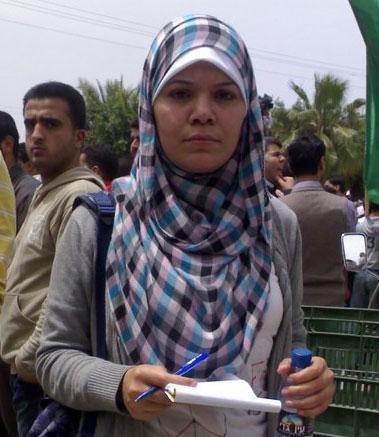
Palestinian journalist Abeer Ayyoub
Credit: Index on Censorship
Another “local” correspondent working for a large newspaper in Istanbul says that she had to practically beg her organization to enroll her in hazardous environment training.5 This was despite the fact that she was one of the publication’s primary stringers at the Turkish-Syrian border during the early days of the Syrian Civil War. The newspaper only paid for safety training after she was promoted to “staff correspondent”—and even then, she received a shorter, ‘watered down’ version of the course. This woman asserted that she was treated this way was because she was a “local,” and not a Western journalist.
“Local journalist” tends to have a subtly pejorative ring, both for US and British reporters who travel to warzones and to journalists who live and work at the site of conflict. Though these “local” journalists were not always born or raised in the regions where they now live, foreign correspondents tend to associate them with the site itself, essentializing their labor as being less objective and less trustworthy than the labor of “global” or “international” war reporters.6 This attitude affect both male and female journalists who live and work in the warzone, but female journalists also face the added challenge of dealing with sexism—from their male colleagues and editors, as well as from sources in the field. In order to do their work successfully, these women must engage in a variety of resourceful performances of their racialized gender.7
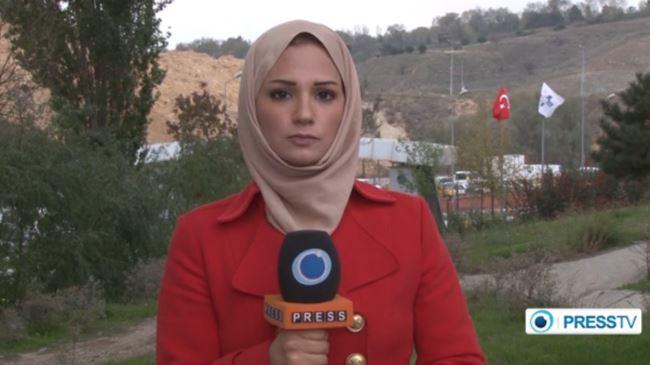
Lebanese-American journalist Serena Shim, killed near the Syrian-Turkish border in 2014.
Credit: PressTV, Iran
As former BBC correspondent and current psychotherapist Mark Brayne argues, the culture of English-language war reporting is a “macho culture,” one in which all correspondents of all genders are expected to push their fears aside, to be aggressive in the field, and to get the story as quickly as possible.8 Brayne says that this culture is so punishing that it can sometimes result in the emotional breakdown of both male and female journalists, a problem that is still not being adequately addressed in the war reporting industry.
But the “macho” quality of US and British war reporting is also deeply dependent on Anglophone notions of race, ethnicity, and nation. If the US and British war reporting industries are generating “global celebrities,” then global communications scholars need to critically examine these figures. They need to analyze how women like Lara Logan circulate as personas, championing certain kinds of femininity while pushing other types of femininity out of the frame.
Furthermore, scholars should investigate the gendered and racialized labor of war reporting as it unfolds on the ground. This is because war reporting is an inherently transnational practice, one that draws on the labor of people scattered across diverse regions. Without the women who work in the “local” context, ostensibly “global celebrities” like Logan and Amanpour would not be able to do their work. In fact, without these locally-based women, war correspondence would not be possible at all.
1 Joel Simon. (2014). Executive Director of the Committee to Protect Journalists. Interview
2 Daya Kishan Thussu and Des Freedman, eds. (2003). War and the media: Reporting
consumerism, and television in a neoliberal age. Philadelphia: Temple University Press;
perspectives. Sage.
of Politics 13, no. 3: 299-328.
6 Sulome Anderson (2015). Freelance War Correspondent. Interview with the Author;
the Author.
Publication. DOI: 10.1080/1461670X.2016.1161494.


